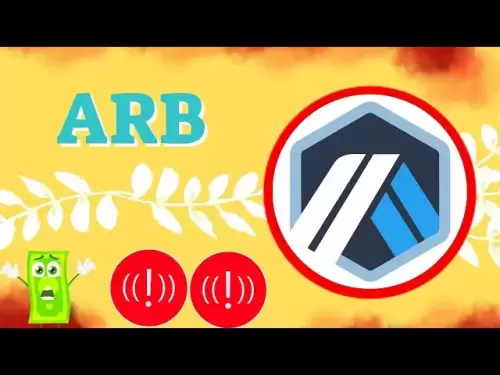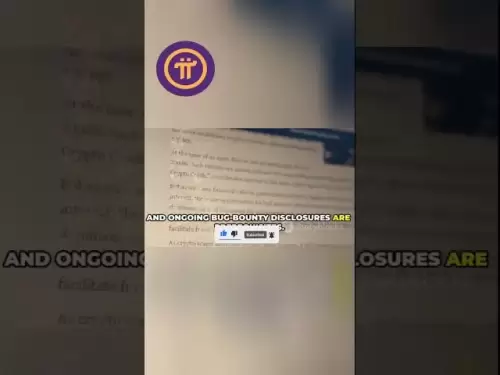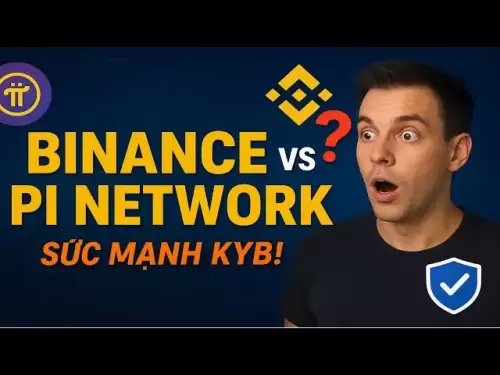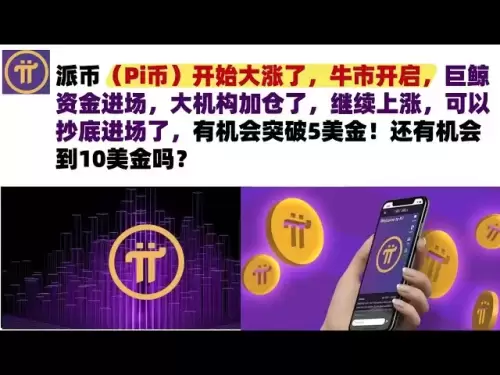-
 Bitcoin
Bitcoin $116400
-0.36% -
 Ethereum
Ethereum $4033
3.40% -
 XRP
XRP $3.302
-1.26% -
 Tether USDt
Tether USDt $1.000
-0.02% -
 BNB
BNB $796.1
1.67% -
 Solana
Solana $177.8
1.89% -
 USDC
USDC $0.9999
0.00% -
 Dogecoin
Dogecoin $0.2314
4.09% -
 TRON
TRON $0.3381
0.14% -
 Cardano
Cardano $0.7989
1.22% -
 Stellar
Stellar $0.4496
-1.84% -
 Chainlink
Chainlink $20.42
9.42% -
 Hyperliquid
Hyperliquid $41.17
0.88% -
 Sui
Sui $3.914
3.77% -
 Bitcoin Cash
Bitcoin Cash $584.7
1.52% -
 Hedera
Hedera $0.2632
-0.54% -
 Avalanche
Avalanche $24.09
3.40% -
 Ethena USDe
Ethena USDe $1.001
-0.02% -
 Litecoin
Litecoin $123.2
1.33% -
 Toncoin
Toncoin $3.318
-0.04% -
 UNUS SED LEO
UNUS SED LEO $8.984
-0.05% -
 Shiba Inu
Shiba Inu $0.00001323
2.85% -
 Uniswap
Uniswap $10.90
4.41% -
 Polkadot
Polkadot $3.999
3.34% -
 Dai
Dai $1.000
0.01% -
 Cronos
Cronos $0.1630
9.64% -
 Bitget Token
Bitget Token $4.484
0.82% -
 Monero
Monero $272.4
2.44% -
 Pepe
Pepe $0.00001173
6.03% -
 Aave
Aave $290.8
2.88%
What is the total amount of bnb coin?
Binance Coin (BNB) has a maximum supply of 200 million, but its circulating supply decreases due to periodic burns, impacting its price and making understanding its tokenomics crucial for investors.
Mar 03, 2025 at 12:06 pm
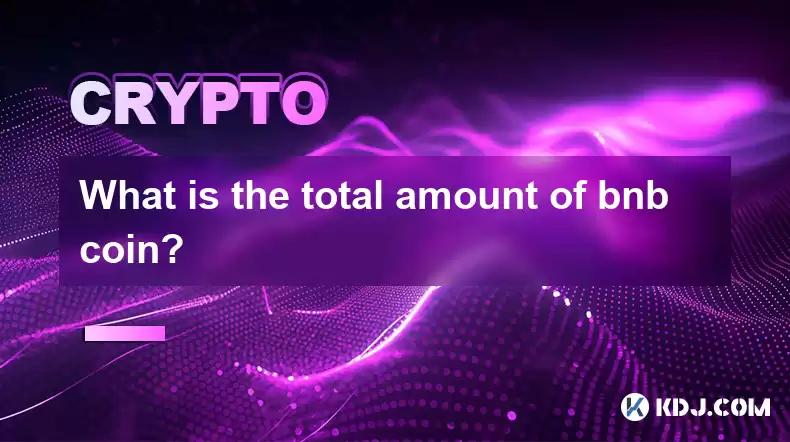
Key Points:
- Binance Coin (BNB) has a maximum supply of 200 million coins.
- This total supply is not fixed; a portion is burned periodically.
- The burning mechanism reduces the circulating supply, potentially impacting price.
- Understanding BNB's tokenomics is crucial for investors.
- The actual circulating supply is less than the maximum supply due to burns.
What is the total amount of BNB coin?
Binance Coin (BNB) doesn't have a simple, unchanging total amount. While the maximum supply is fixed at 200 million BNB, the circulating supply is constantly decreasing. This is because Binance, the cryptocurrency exchange that created BNB, implements a token burn mechanism. This means that a portion of BNB is periodically removed from circulation, permanently reducing the total supply available. This burn mechanism is a crucial part of BNB's tokenomics and impacts its value.
How does the BNB burn mechanism work?
The BNB burn mechanism is designed to reduce the total supply of BNB over time. Binance typically burns a portion of its BNB holdings on a quarterly basis. The amount burned varies depending on Binance's profits and other factors. These burns are publicly announced and verifiable on the Binance blockchain. This process contributes to deflationary pressure, potentially increasing the value of remaining BNB.
What is the difference between maximum supply and circulating supply?
The maximum supply of BNB represents the absolute upper limit of coins that will ever exist – 200 million. The circulating supply, however, is the number of BNB coins currently in circulation and actively traded in the market. Because of the burn mechanism, the circulating supply is always lower than the maximum supply and continuously decreases with each burn event.
How can I track the current circulating supply of BNB?
You can easily find the current circulating supply of BNB by checking reputable cryptocurrency data websites such as CoinMarketCap, CoinGecko, or directly on the Binance website. These platforms provide real-time data on market capitalization, trading volume, and the circulating supply of various cryptocurrencies, including BNB. Regularly checking these resources gives you an up-to-date picture of the BNB supply.
Why does Binance burn BNB?
Binance introduced the BNB burn mechanism as a way to control the supply and potentially increase its value. By reducing the circulating supply, Binance aims to create scarcity, a fundamental economic principle that can drive up demand and price. It also serves as a demonstration of Binance's commitment to the long-term health and stability of the BNB ecosystem. This mechanism benefits BNB holders by potentially increasing the value of their holdings.
What are the implications of the BNB burn for investors?
The BNB burn mechanism has several implications for investors. Firstly, it creates a deflationary pressure on the price of BNB. Reduced supply can lead to increased demand, potentially pushing the price upward. Secondly, it demonstrates Binance's commitment to the long-term sustainability of the BNB ecosystem. This can instill confidence in investors and attract new participants. However, it's important to remember that the price of BNB is influenced by many factors, and the burn mechanism is just one of them.
What is the history of BNB burns?
Binance has conducted several BNB burns since the inception of the coin. The amount burned in each instance has varied, with larger burns occurring as Binance's revenue and trading volume increased. The details of each burn, including the date and the amount burned, are publicly available and easily verifiable. This transparency builds trust and allows investors to track the progress of the burn mechanism over time. Understanding this history can provide insights into future burn events.
How does the BNB burn affect the overall cryptocurrency market?
While the BNB burn primarily affects the BNB ecosystem, it can indirectly influence the broader cryptocurrency market. Significant BNB burns can generate positive sentiment towards the cryptocurrency market as a whole. This is because it demonstrates a commitment to responsible tokenomics and potentially increases investor confidence. However, the overall market is impacted by numerous other factors, so it's crucial to consider the broader context.
Can the maximum supply of BNB ever change?
The maximum supply of BNB is currently fixed at 200 million. While Binance has not publicly stated any plans to change this limit, it remains theoretically possible. However, any change to the maximum supply would likely be announced well in advance and would have significant implications for the market. Currently, all indications suggest that the maximum supply will remain at 200 million.
Is there a schedule for future BNB burns?
Binance typically announces BNB burn events in advance. However, there isn't a rigidly fixed schedule. The timing and the amount burned depend on Binance's performance and various market conditions. Investors can stay informed about upcoming burns by monitoring Binance's official announcements and reputable cryptocurrency news sources.
Frequently Asked Questions:
Q: What is the current circulating supply of BNB? A: The current circulating supply of BNB fluctuates and can be found on websites like CoinMarketCap or CoinGecko.
Q: Will the BNB burn continue indefinitely? A: Binance hasn't indicated an end to the burn program, but the frequency and amount burned could change over time.
Q: How does the BNB burn affect the price of BNB? A: The burn creates deflationary pressure, potentially increasing the price, but other market factors also influence the price.
Q: Where can I find more information about the BNB burn mechanism? A: Binance's official website and blockchain explorer are good resources.
Disclaimer:info@kdj.com
The information provided is not trading advice. kdj.com does not assume any responsibility for any investments made based on the information provided in this article. Cryptocurrencies are highly volatile and it is highly recommended that you invest with caution after thorough research!
If you believe that the content used on this website infringes your copyright, please contact us immediately (info@kdj.com) and we will delete it promptly.
- Shiba Inu (SHIB) in the Crypto Landscape: Community, Trends, and Future Outlook
- 2025-08-09 20:30:12
- Lasers in Modern Warfare: Iron Beam and the Future of Defense
- 2025-08-09 20:30:12
- Maxi Doge Presale: The Meme Coin That's Pumping Iron and Prices!
- 2025-08-09 19:10:11
- Rare Coin Warning: Don't Get Fooled by That 1p Coin!
- 2025-08-09 18:50:12
- Cardano, Unilabs, and Tron Price: Decoding the Latest Crypto Buzz
- 2025-08-09 18:30:12
- Aerodrome Finance: Price Targets and the Bullish Channel - What's Next?
- 2025-08-09 18:50:12
Related knowledge

Where can I buy UMA (UMA)?
Aug 07,2025 at 06:42pm
Understanding UMA and Its Role in Decentralized FinanceUMA (Universal Market Access) is an Ethereum-based decentralized finance (DeFi) protocol design...

How to buy Storj (STORJ) tokens?
Aug 09,2025 at 07:28am
Understanding Storj (STORJ) and Its Role in Decentralized StorageStorj is a decentralized cloud storage platform that leverages blockchain technology ...
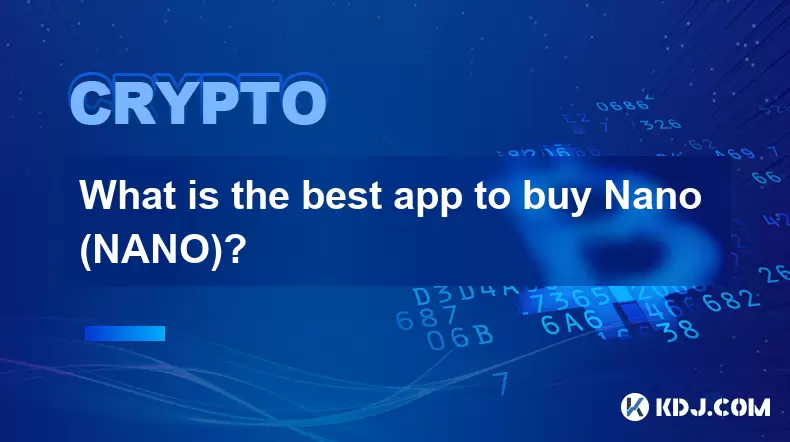
What is the best app to buy Nano (NANO)?
Aug 09,2025 at 03:35am
Understanding Nano (NANO) and Its Unique FeaturesNano is a feeless, instant cryptocurrency designed for fast peer-to-peer transactions. Unlike many ot...
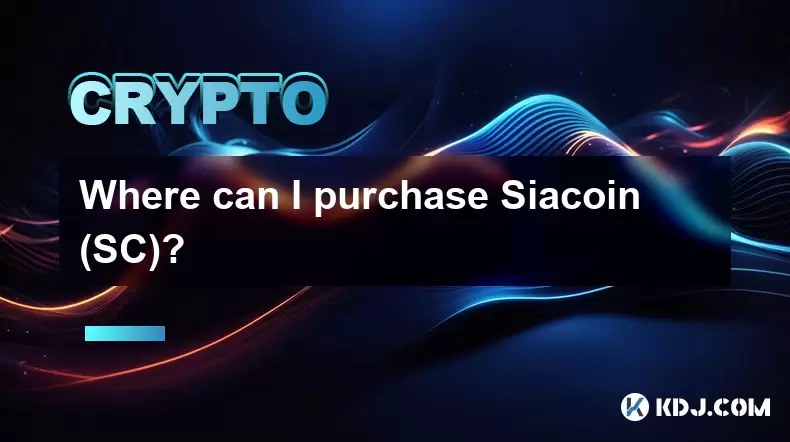
Where can I purchase Siacoin (SC)?
Aug 08,2025 at 11:14am
Understanding Siacoin (SC) and Its Role in the Sia NetworkSiacoin (SC) is the native cryptocurrency of the Sia decentralized cloud storage platform, a...
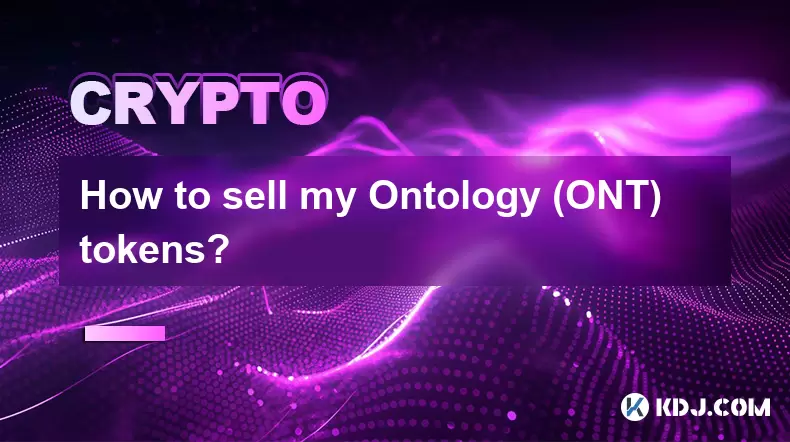
How to sell my Ontology (ONT) tokens?
Aug 09,2025 at 06:08pm
Understanding Ontology (ONT) and Its Trading EcosystemBefore selling your Ontology (ONT) tokens, it's essential to understand the nature of the crypto...
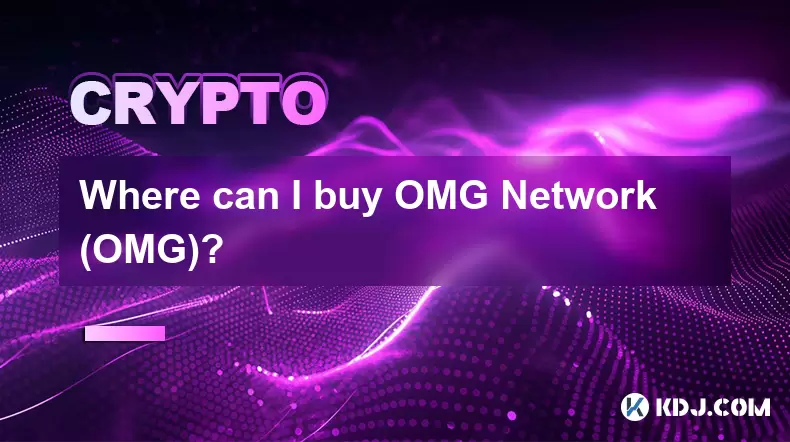
Where can I buy OMG Network (OMG)?
Aug 08,2025 at 12:57pm
Understanding OMG Network (OMG) and Its PurposeThe OMG Network, originally known as OmiseGO, is a layer-2 scaling solution built on the Ethereum block...

Where can I buy UMA (UMA)?
Aug 07,2025 at 06:42pm
Understanding UMA and Its Role in Decentralized FinanceUMA (Universal Market Access) is an Ethereum-based decentralized finance (DeFi) protocol design...

How to buy Storj (STORJ) tokens?
Aug 09,2025 at 07:28am
Understanding Storj (STORJ) and Its Role in Decentralized StorageStorj is a decentralized cloud storage platform that leverages blockchain technology ...

What is the best app to buy Nano (NANO)?
Aug 09,2025 at 03:35am
Understanding Nano (NANO) and Its Unique FeaturesNano is a feeless, instant cryptocurrency designed for fast peer-to-peer transactions. Unlike many ot...

Where can I purchase Siacoin (SC)?
Aug 08,2025 at 11:14am
Understanding Siacoin (SC) and Its Role in the Sia NetworkSiacoin (SC) is the native cryptocurrency of the Sia decentralized cloud storage platform, a...

How to sell my Ontology (ONT) tokens?
Aug 09,2025 at 06:08pm
Understanding Ontology (ONT) and Its Trading EcosystemBefore selling your Ontology (ONT) tokens, it's essential to understand the nature of the crypto...

Where can I buy OMG Network (OMG)?
Aug 08,2025 at 12:57pm
Understanding OMG Network (OMG) and Its PurposeThe OMG Network, originally known as OmiseGO, is a layer-2 scaling solution built on the Ethereum block...
See all articles





















